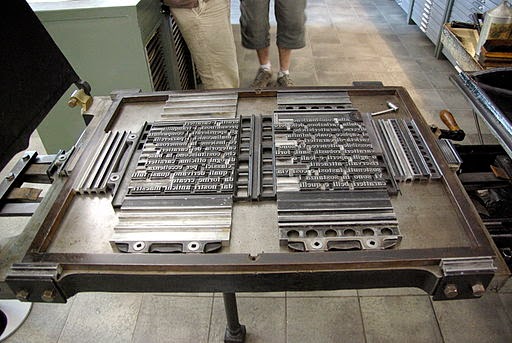The Pi and the Printing Press
 |
| By Kristian Bjornard from Baltimore, USA (Lock up on a metal Gutenberg-style press) [CC-BY-SA-2.0], via Wikimedia Commons |
From the Printing Press...
Over five centuries ago Gutenberg introduced moveable type to Europe, and the whole world changed forever.His printing press heralded the era of mass communication, leading eventually to mass literacy, cheap textbooks, newspapers, scientific journals and other media that produced massive and rapid social change.
It helped to fuel Renaissance and Reformation, and its effects persist in the digital age.
...to the Raspberry Pi
KA Lite brings the content of Khan Academy to environments without high-speed reliable internet access. In many locations around the world, internet access is limited, expensive or non-existent but smartphones are cheap and widely used.
Run a wifi hotspot on a Raspberry Pi, with a copy of KA Lite and selected Khan Academy content, and you have a classroom that will allow twenty students or more to access world-class learning materials in Mathematics, Science and other Study areas.
 |
| courtesy raspberrypi.org |
Kiwix
Kiwix is an offline reader for web content. It makes it easy to host a local copy of material like Wikipedia using the highly condensed Zim format. Kiwix can run on the Raspberry Pi, so your KA Lite hotspot can double up as a reference library.Above and beyond
Eben Upton's original goal was to fire up a love of programming in a new generation, in much the same way that the BBC Micro did inn the 1980s. The Pi has already achieved that and more.
The Pi has been a major factor in re-invigorating the teaching of real computing in UK schools. Carrie Anne Philbin (@MissPhilbin) is a superb role model for teachers who want to inject fun and excitement into STEM subjects, and now she is sharing her experience through the Picademy program.
But the Pi has even more potential for good. The software mentioned above, coupled with the Pi's low cost and low power requirements, brings new opportunities to millions of students world-wide, from primary to tertiary levels.
Unesco states that Education is a powerful tool by which economically and socially marginalized adults and children can lift themselves out of poverty and participate fully as citizens. The Pi, with a little free software and plenty of open content, can help that happen across the globe.
Unesco states that Education is a powerful tool by which economically and socially marginalized adults and children can lift themselves out of poverty and participate fully as citizens. The Pi, with a little free software and plenty of open content, can help that happen across the globe.




Comments
Post a Comment